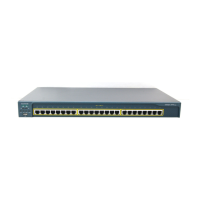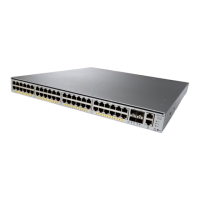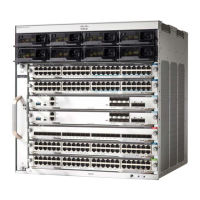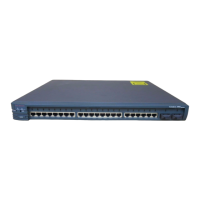31-3
Catalyst 2950 and Catalyst 2955 Switch Software Configuration Guide
78-11380-10
Chapter 31 Configuring EtherChannels
Understanding EtherChannels
Figure 31-2 Relationship of Physical Ports, Logical Port Channels, and Channel Groups
When a port joins an EtherChannel, the physical interface for that port is shut down. When the port
leaves the port-channel, its physical interface is brought up, and it has the same configuration as it had
before joining the EtherChannel.
Note Configuration changes made to the logical interface of an EtherChannel do not propagate to all the
member ports of the channel.
Understanding the Port Aggregation Protocol and Link Aggregation Protocol
The Port Aggregation Protocol (PAgP) and Link Aggregation Control Protocol (LACP) facilitate the
automatic creation of EtherChannels by exchanging packets between Ethernet interfaces. PAgP is a
Cisco-proprietary protocol that can be run only on Cisco switches and on those switches licensed by
licensed vendors to support PAgP. LACP is defined in IEEE 802.3ad and allows Cisco switches to
manage Ethernet channels between switches that conform to the 802.3ad protocol.
By using one of these protocols, a switch learns the identity of partners capable of supporting either
PAgP or LACP and learns the capabilities of each interface. It then dynamically groups similarly
configured interfaces into a single logical link (channel or aggregate port); these interfaces are grouped
based on hardware, administrative, and port parameter constraints. For example, PAgP groups the
interfaces with the same speed, duplex mode, native VLAN, VLAN range, and trunking status and type.
After grouping the links into an EtherChannel, PAgP adds the group to the spanning tree as a single
switch port.
101238
Channel-group
binding
Physical ports
Logical
port-channel
